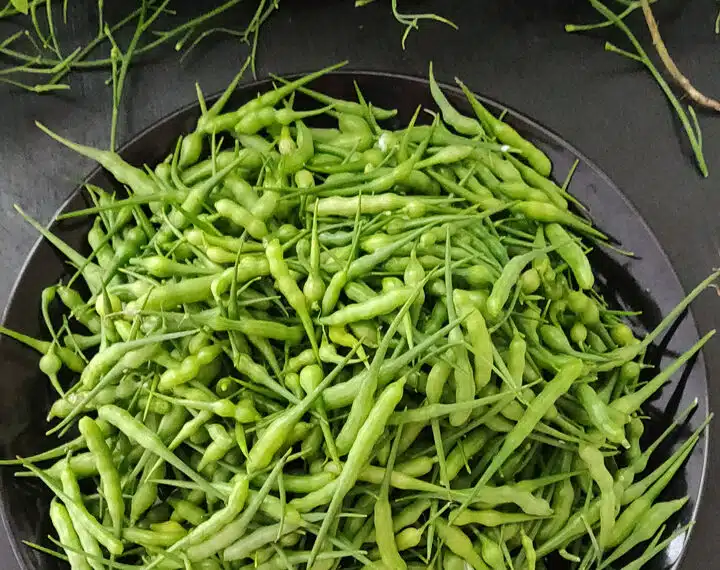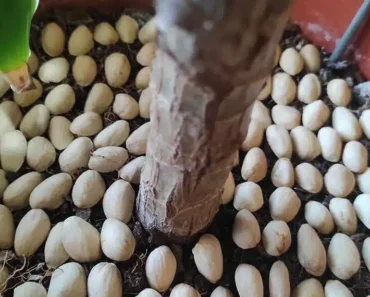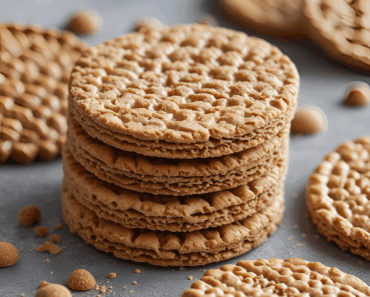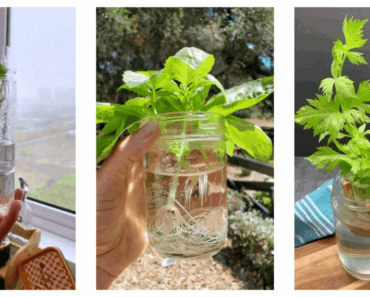If you’re used to harvesting your radishes as soon as they reach a mature size, it’s time to rethink your strategy.
This year, instead of pulling up your radishes when they’re ready, leave them in the ground and let them flower.
Not only are radish flowers beautiful and beneficial for pollinators, but they also lead to an abundant harvest of delicious radish seed pods that might even be more flavorful than the radishes themselves.
In this article, we’ll explore why you should let your radishes flower and go to seed, how to grow and harvest radish pods, and why this approach can benefit your garden in more ways than one.
From a single radish plant, you’ll enjoy a bountiful harvest of seed pods that can be used in a variety of tasty dishes. Plus, the flowers and seed pods can help keep unwanted insects away!
Why You Should Let Your Radishes Flower
Radishes are typically grown for their crunchy, peppery roots, but allowing them to flower and set seed unlocks an entirely new culinary experience.
Here’s why you should let your radishes stay in the ground and go to seed this year:
- Enjoy Beautiful Flowers: Radish flowers are delicate, four-petaled blossoms in shades of white, pink, or purple. They add a touch of beauty to your garden and attract beneficial pollinators like bees and butterflies.
- Harvest Abundant Seed Pods: When you allow radishes to flower and go to seed, they produce long, slender seed pods that are edible and delicious. These seed pods are tender, crunchy, and have a mild, peppery flavor similar to the radish root but with a unique twist.
- Natural Pest Control: Radish flowers and seed pods can help deter certain pests from your garden, reducing the need for chemical insecticides. Additionally, their strong aroma may repel insects that would otherwise harm your plants.
- Multiple Harvests from a Single Plant: Instead of getting just one radish root, you can get dozens (or even hundreds) of seed pods from a single radish plant, maximizing your yield and making the most of your garden space.
- Less Waste and More Versatility: By harvesting seed pods, you’re using a part of the radish plant that often goes to waste. The pods can be used in salads, stir-fries, pickles, and more—adding variety to your meals.
How to Grow Radish Pods
Growing radish pods starts with planting your radishes as you normally would.
Follow these steps to ensure a successful harvest of delicious seed pods:
1. Plant Radish Seeds
Sow radish seeds directly in your garden when the soil temperature is around 50°F (10°C). Radishes are cool-weather crops and thrive in early spring or fall.
Planting Tips:
- Choose a sunny location with well-drained soil.
- Sow seeds ½ inch deep and 1 inch apart.
- Space rows 8-12 inches apart to allow for airflow.
2. Allow Radishes to Bolt and Flower
Once the weather warms up, radish plants will naturally begin to bolt, sending up tall flower stalks. While many gardeners consider bolting to be a sign that the radish root will become bitter and tough, this is exactly what you want when growing radish pods.
How to Care for Bolting Radishes:
- Continue watering and caring for your radish plants as usual.
- Allow the flower stalks to develop fully and produce small, delicate flowers.
3. Wait for Seed Pods to Develop
After the flowers fade, the radish plant will begin producing seed pods. These seed pods are ready to harvest when they are young, tender, and green.
Harvesting Tips:
- Use scissors or pruners to snip the seed pods from the plant.
- Harvest the pods when they are 2-6 inches long for the best flavor and texture.
- Avoid letting the pods mature and dry out on the plant, as they can become tough and bitter.
How to Use Radish Seed Pods in the Kitchen
Radish seed pods have a unique, mildly spicy flavor and a crisp texture, making them a versatile ingredient in the kitchen. Here are some delicious ways to enjoy your radish pod harvest:
1. Raw in Salads
Add freshly harvested radish seed pods to salads for an unexpected burst of flavor and crunch. Their peppery bite pairs well with leafy greens, cucumbers, and bell peppers.
Tip: Toss radish pods with a light vinaigrette dressing and enjoy them as a refreshing, crunchy salad topping.
2. Pickled Radish Pods
Pickling is a fantastic way to preserve radish seed pods and enjoy their tangy, crunchy goodness all year long.
How to Pickle Radish Pods:
- Blanch the seed pods in boiling water for 1-2 minutes.
- Place them in a jar with garlic, dill, and peppercorns.
- Pour hot vinegar brine over the pods and seal the jar.
- Let the pickles sit for at least 48 hours before enjoying.
3. Stir-Fried or Sautéed
Radish seed pods can be quickly stir-fried or sautéed for a delicious side dish. Their flavor mellows out with cooking, making them a tasty addition to stir-fries, pasta dishes, or vegetable sautés.
Cooking Tip: Sauté radish pods with garlic, olive oil, and a pinch of salt for a simple yet flavorful side dish.
4. Add to Sandwiches and Wraps
Use radish seed pods in sandwiches, wraps, or tacos for added crunch and a hint of spice. They pair well with creamy spreads, cheese, and fresh vegetables.
Serving Idea: Layer radish pods in wraps with hummus, roasted veggies, and greens for a delicious, plant-based lunch.
Benefits of Letting Radishes Flower and Go to Seed
Letting your radishes flower and produce seed pods offers numerous benefits beyond just a tasty harvest:
- Pollinator Attraction: Radish flowers attract bees, butterflies, and other pollinators to your garden, which helps improve the pollination of other plants and supports the local ecosystem.
- Seed Saving: If you allow some seed pods to fully mature and dry out on the plant, you can collect radish seeds for planting next season.
- Continuous Harvest: Regularly harvesting seed pods encourages the plant to produce more, providing a steady supply of fresh, crunchy pods throughout the season.
This year, try leaving your radishes in the ground to flower and go to seed. The results are well worth the wait!








